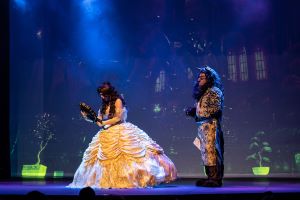When La Catrina Quartet, the quartet in residence of the Western Piedmont Symphony, performs a chamber concert, you can always expect to hear something a bit out of the ordinary, and this concert, given at the Catawba Valley Arts and Science Center, was no exception. The program opened with two short works by the Mexican composer Jose Pablo Moncayo (1912-1958). Moncayo was born in Guadalajara, and studied composition with Carlos Chavez and Aaron Copland. He also served as conductor of the National Symphony Orchestra of Mexico City.
The first work presented was Moncayo’s Quintet for Flute and String Quartet, “Amatzinac”. For this piece, the quartet, Daniel Vega-Albela and George Figueroa, violins, Jorge Martinez, viola, and Alan Daowz, cello, was joined by Laura Dangerfield Stevens on flute. Ms. Stevens is principal flutist of the Western Piedmont Symphony and holds the piccolo position with the Salisbury Symphony Orchestra. She is also currently pursuing her Doctorate of Musical Arts Degree from the University of North Carolina at Greensboro.
“Amatzinac” is the name of a river in Mexico, and this piece reflects its two conditions: dry or with very little water flowing, and great volumes of water gushing rapidly, only to have the stream dry up at the end. Both flute and strings beautifully maintained the lyricism of the work in both the languid and frenetic sections, a melodic reflection of the stream’s varying conditions.
“Huapango” for String Quartet is Moncayo’s best known work. It is based on folk music themes collected when the composer travelled to Alvarado in the state of Veracruz. The score has come to be regarded as a second national anthem of Mexico. The original version of this piece was for full orchestra, and in this form, was performed by the Western Piedmont Symphony in 2005. The string quartet version was transcribed by Michael Meisner, first violinist of the Mexico City String Quartet, with additional revisions by Alan Daowz, cellist with the La Catrina quartet. It is a very rhythmic dance, and uses practically every method of playing a string instrument, from tapping on the body of the instrument for percussive effects, to bowing on the strings, to pizzicato (plucking on the strings), to hitting the strings with the wooden part of the bow. The work is very lively, and the quartet brought out all of the flavor of the dance and the Mexican national character.
To conclude the first half of the concert, Ms. Stevens was joined by Messrs. Vega-Albela, Martinez, and Daowz in Wolfgang Amadeus Mozart’s (1756-1791) Flute Quartet in D, K. 285. Although Mozart was not fond of the flute, he wrote some beautiful music for the instrument. In the first movement, the flute introduces three different themes, and is then followed by the other instruments. In the second, the violin plays a melody against pizzicato accompaniment. The concluding Rondo movement is a sprightly theme repeated several times. There was gracefulness and beauty in the playing, with an interaction among the players that gave the performance freshness and spirit. Ms. Stevens’ tone is musical and pure, and her phrasing and agility elegant and charming.
The second half of the program began with Franz Joseph Haydn’s (1732-1809) String Quartet in D, Op. 64, No. 5, “The Lark”, so named for the soaring theme that the first violin plays above the other instruments in the opening movement. Mr. Vega-Albela truly made his violin sing like a bird. The Adagio is perhaps one of Haydn’s most beautiful slow movements, with the first violin playing an uninterrupted melodic line, again beautifully performed. The Minuet is followed by a perpetual motion Finale, which ends in a wonderful fugue. Here, the playing was precise and accurate, clear and well balanced.
The concert concluded with a total change of pace from what proceeded: String Quartet in G minor, Op. 10, by Claude Debussy (1862-1918). Debussy was nonconforming in his composition style, and refused to be confined by the classical strictures of form that had been prevalent for more than a century. His music is impressionist, in that it is more concerned with tone colors than development of a melodic line. This was the only string quartet that Debussy wrote. In four movements, it paints many pictures in a rainbow of colors, each perfectly portrayed by the members of the quartet with beauty and grace. It is hard to believe that they have worked on this piece for only a short time.
Owing to a different placement on the stage of the screens behind the quartet, their sound is more bright and clear, and their balance and blending much improved. I hope that they will keep this new arrangement.











